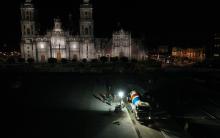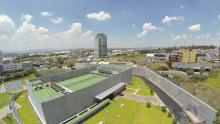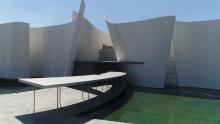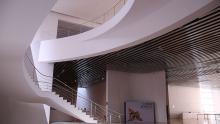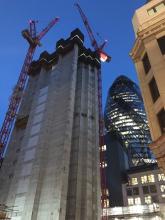
Torre Reforma, scheduled for its official inauguration in late 2015, is already an architectural icon in Mexico.
Designed by the Mexican architect Benjamín Romano from LBR&A Arquitectos, and at 807feet (246m) and 57 levels, the emblematic corporate building is the tallest in Mexico City.
According to
Characterised by both its slimness and strength, the walls that serve as the backbone of the tower were built with Cemex Fortis. The company says the high-strength properties of this concrete allow it to bear the weight of the slabs, which were conceived without interior columns to maximise the use of space, with the support of the intertwined metallic structure.
The flexibility of concrete as a building material, coupled with the strategic design of the walls with tetris-style windows, dissipates telluric waves and releases energy in the event of an earthquake.
The concrete used for the walls was designed by Cemex in gradient shades of grey to match the building height, in accordance with customer requirements.
“Our concrete walls are everything on this project. They are the structure, the facade, the view and the architectural image. In short, they are the tower’s masterpiece,” says Julieta Boy, project manager at LBR&A Arquitectos.
Special pumping equipment to pour concrete at high altitudes and in difficult access areas was required for the project.
Placing boom is a technology solution provided by Cemex that allows for a continuous concrete pour with utmost safety, promptness, consistency, and efficiency of cost and labour, says the company.
The project’s treatment plant recycles 100% of consumed water, allowing the city to save 700 million litres/year.
Located in the heart of Paseo de la Reforma, the skyscraper made news when construction began on its foundation in 2008.
At that time it was necessary to temporarily move a house dating back to 1929, and classified as historical and cultural heritage by the Instituto Nacional de Bellas Artes, and then return it to its original location with the support of a tray made with Cemex specialty concrete.

